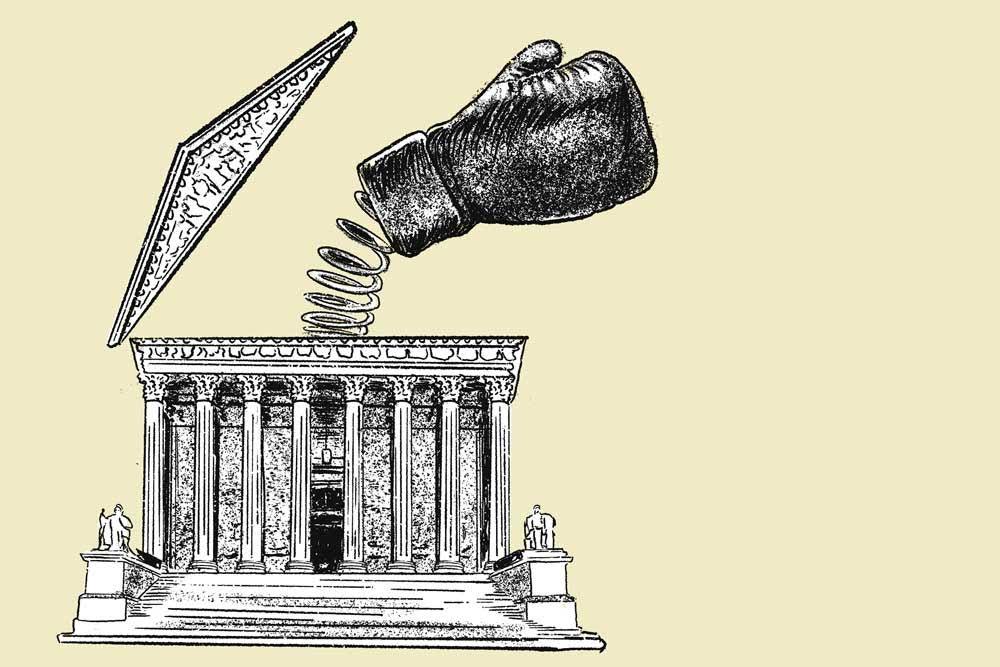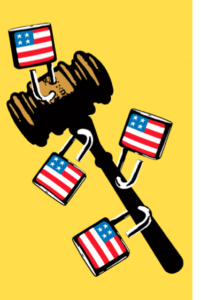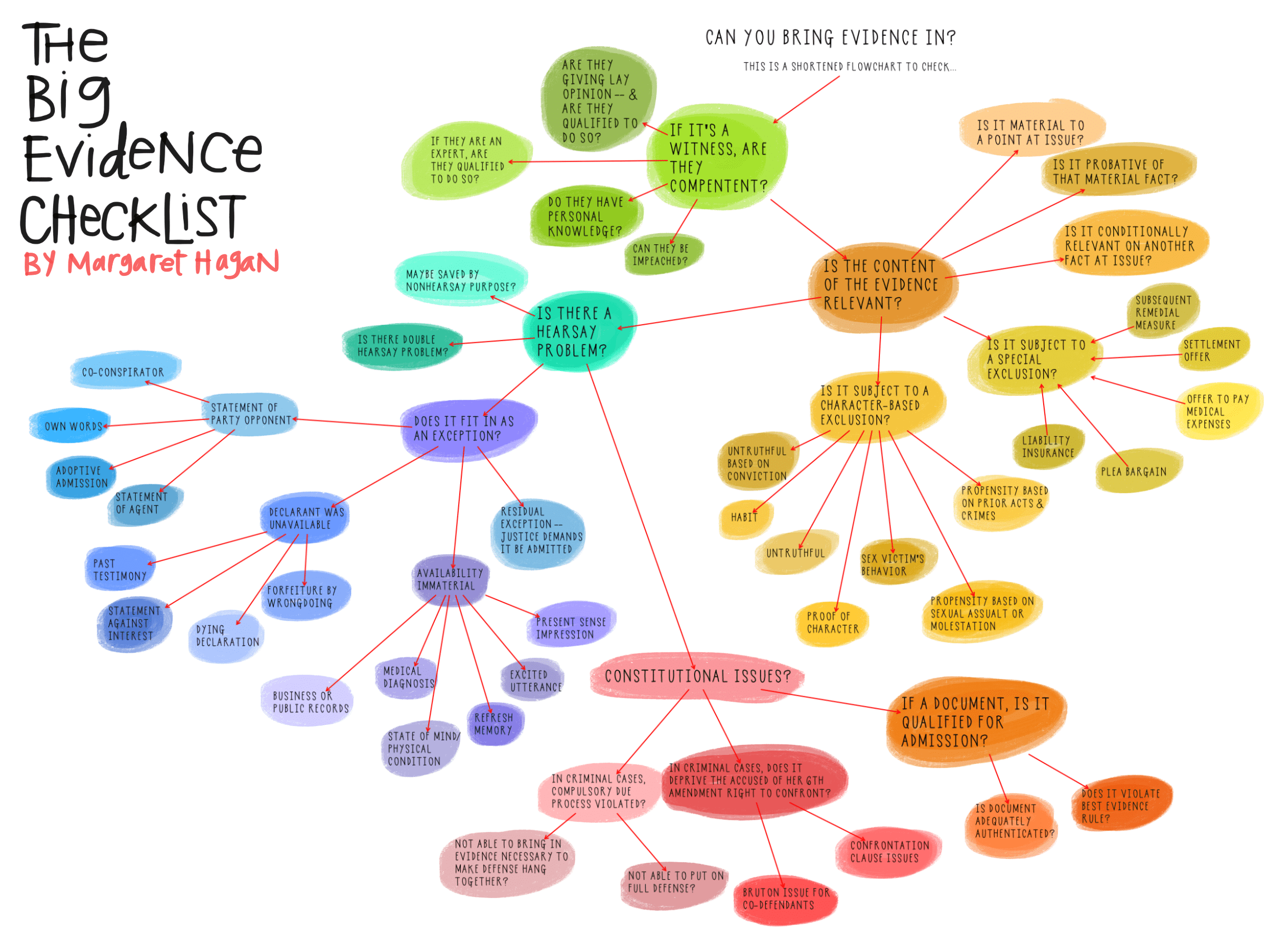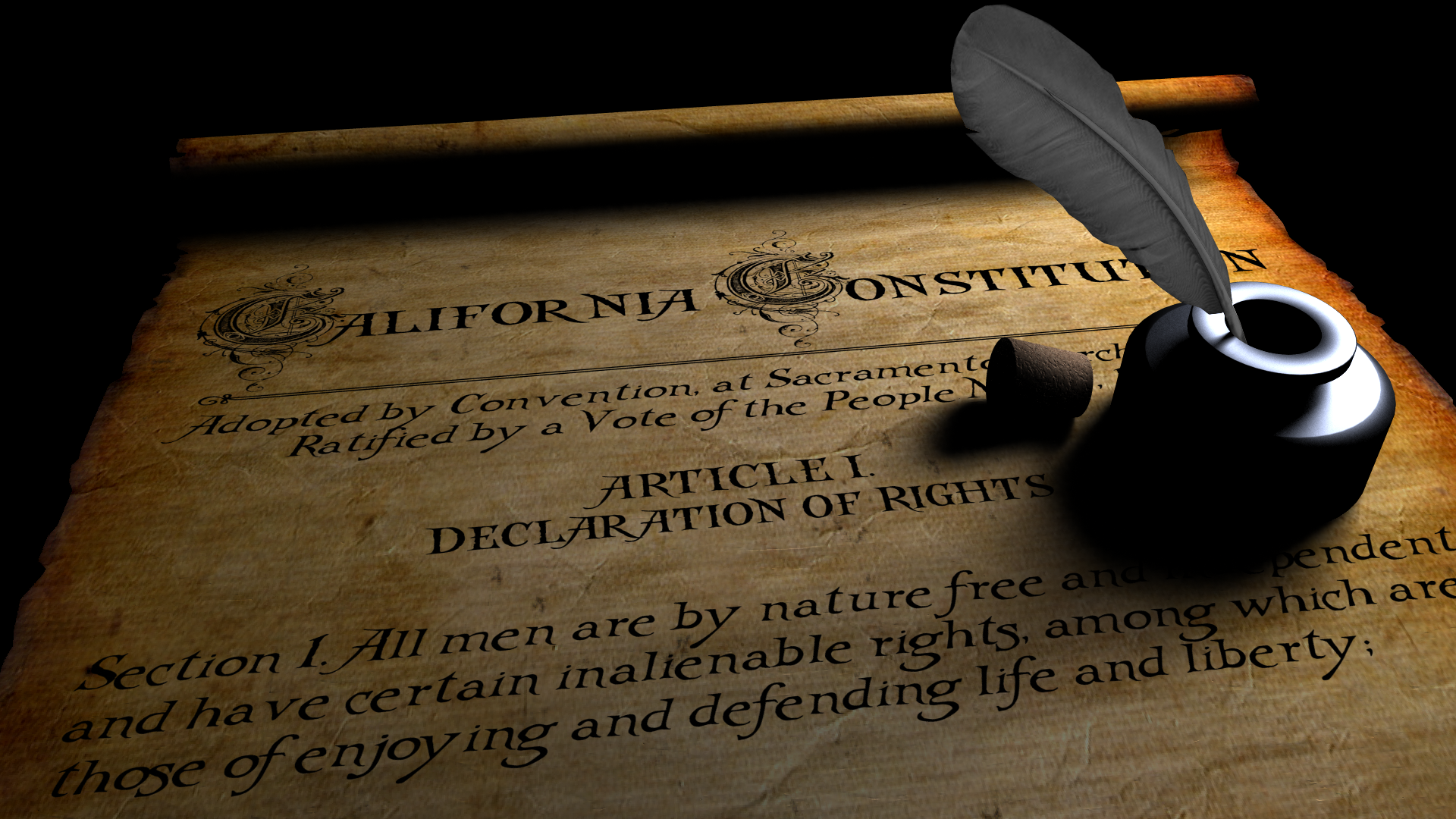Tossing Out an Inferior Judgement – When the error has resulted in a miscarriage of justice.
Like Monopoly’s Bank Error in Your Favor Collect $200. A Error in a Judicial Proceeding is Always in your favor!
and if they harmed your civil rights it is a tortable offense as well meaning Civil lawsuit against the agency and/or the individual civil servant goverment employee
read below:
California Constitution Article VI – Judicial Section 13.
Universal Citation: CA Constitution art VI § 13
SEC. 13.
No judgment shall be set aside, or new trial granted, in any cause, on the ground of misdirection of the jury, or of the improper admission or rejection of evidence, or for any error as to any matter of pleading, or for any error as to any matter of procedure, unless, after an examination of the entire cause, including the evidence, the court shall be of the opinion that the error complained of has resulted in a miscarriage of justice.
https://www.thenalfa.org/blog/defense-prevailing-party-in-dvpa-case-dropped-by-plaintiff/
“Motion Hearing re attorney fees is denied with prejudice.”
erroneous prevailing party determination resulted in a miscarriage of justice….[B]ecause the respondent on petition for a domestic violence restraining order, the trial court had discretion to deny his request for prevailing party attorney fees under [Family Code] section 6344, subdivision (a).”
Art, VI, §13 of the state Constitution, reversal is called for only where an error has resulted “in a miscarriage of justice” which, she declared, did not occur.
you can download it directly from the goverment here https://www.courts.ca.gov/documents/article_vi_current.pdf
A Brief History of the California Constitution
THE California State Constitution is one of the oldest state constitutions still in use today; it’s 130 year history defined by revision, amendment and reform. The constitution’s long life, coupled with numerous partial-reform efforts, has resulted in what is today the world’s third longest constitution. With 512 amendments, the Constitution of California is eight times the length of the U.S. Constitution and has been criticized as “a perfect example of what a constitution ought not to be”1 and derided for being “more about legal technicalities than principles; an embarrassment for an otherwise cutting-edge state”.2
Statehood
IN 1848 the United States acquired California from Mexico under the terms and conditions of the Treaty of Guadeloupe Hidalgo. When a gold discovery at Sutter’s Mill the following year sparked the famous California Gold Rush, the U.S. Congress acted swiftly to grant California statehood. Lacking an effective territorial administration for its rapidly growing population, California’s leaders were pressed to draft a workable constitution. With the backing of Brigadier General Bennett Riley, California’s military governor, 48 delegates convened a Constitutional Convention in Monterey. After final ratification, the delegates submitted the constitution to Congress and on Sunday, September 9, 1850, California was admitted to the Union as the 31st State.
Heavily based on other state constitutions, the 1848 California Constitution proved inadequate to meet the long-term needs of the flourishing new state.3 Political leaders tried to amend the document via constitutional convention and the amendment process, however, during the 30 years which followed statehood, all three constitutional convention ballot proposals failed to win voter support and, of the many constitutional amendments proposed, only three became law. Finally, in 1877 the state legislature again submitted the question of convening a Constitutional Convention to the voters, this time it passed.
THE Constitutional Convention of 1878-79 produced California’s second constitution. Although technically surviving into the modern era, the document has done so weighted down with over 500 amendments and having been put through a 12 year revision process from 1966 to 1974. Although state constitutional conventions have been commonplace throughout U.S. history, the circumstances surrounding the 1878 California Convention resulted in features which would distinguish California’s constitution from other states. Convened amidst economic upheaval, the 1878 convention had an unusually strong focus on social and economic reform. As a result, whereas most constitutions limit themselves to detailing the broad legal principles on which future laws are to be made, the 1878 constitution instead addressed many subjects normally considered statutory in other states.4
In the decades after 1879, between its focus on statutory measures and legislative amendment, the California Constitution began to swell. California’s 1911 adoption of direct democracy through the ballot initiative and referendum gave citizens and interest groups the power to amend the constitution through individual initiatives. By 1930, the California constitution had grown to over 65,000 words (by comparison, the Constitution of the United States has about 4,500 words).5 The increasingly unwieldy nature of the document led to wholesale revision efforts, and on separate occasions in 1898, 1914, 1928, and 1929 the legislature put the question of a constitutional convention to the voters, where each time the measure was defeated. Finally, in 1935, voters approved convening a Constitutional Convention. However, in the midst of coping with the Great Depression, a convention was never convened.
Reform and Failure
FOLLOWING WWII, constitutional conventions surged in popularity as citizens sought to modernize obsolete and outdated state constitutions. Since 1945, Constitutional Conventions have been held in Alaska, Connecticut, Georgia, Hawaii, Illinois, Louisiana, Michigan, Missouri, Montana, Rhode Island.
Meanwhile in California, in 1947 the state legislature authorized a Joint Interim Committee to draft a new constitution. They were to be assisted by an Advisory Committee which counted among its members two ex-governors, constitutional experts, and representatives from a variety of major political organizations and interest groups.6 With such an illustrious and knowledgeable group, real constitutional reform seemed assured. However, interest groups were able to limit the work of the committee to simply eliminating obsolete language.7 As it became clear the committee had no teeth, public interest faded. Although most of the Joint Interim Committee’s final recommendations were approved by both the legislature and the voters, the recommendations amounted to little more than reducing the constitution’s length by about 14,000 unnecessary words. Even with the cuts, by the late 1950’s the California constitution had grown to over 80,000 words with 350 amendments, making it the second most longest in the country.
approved) measures to empower the legislature to propose substantial constitutional revisions in addition to individual amendments. The legislature responded by appointing a new special body responsible solely for constitutional reform: the Constitution Revision Commission.
Over the course of almost a decade, the Constitution Revision Commission of 1964 to 1971 brought about some of the most substantial reforms of California’s constitution since the convention of 1878. The commission’s members included lawyers, educators, businesspeople, labor leaders, civic leaders, and others, along with a dedicated staff.8 Proposition 1-A, a key amendment element of the commission’s work, authorized major refurbishments of California’s system of governance. Voters accepted many other amendments drafted by the commission as well, addressing various constitutional improvements and simplifications. However, when it came to several particularly significant and controversial topics, such as budget reform and the amendment process, the commission found itself deadlocked between competing interest groups and was consequently unable to make significant recommendations. By the end of the process the Constitution Revision Commission, much like the Joint Interim Committee before it, had accomplished little more than reducing the length of the state’s constitution.
During the 1990’s Governor Pete Wilson appointed the second Constitutional Revision Commission. Convened at a time of economic recession, the bipartisan group had a specific mandate: examine the most controversial aspects of the constitution reform and suggest reforms. Pointing out that the state possessed more than 7,000 units of government and over 32 million residents, yet was governed by a constitution written when the population was closer to 800,000, the commission argued that major substantive constitutional changes were needed. In 1996 the commission released a list of constitutional recommendations aimed at improving accountability and responsiveness of government, eliminating barriers to efficiency and flexibility, and assuring that the state kept its fiscal house in order by maintaining a balanced budget. However, by the time the commission issued its final report California’s economy had recovered, the pressure to immediately act faded, and the commission’s work was ultimately neglected.
“The People’s Way”
CALIFORNIA’S financial system had become so fragile and so complicated that few expected it was capable of weathering a sudden crisis, such as deep and prolonged recession. The twin arrivals of the housing collapse and the banking crisis of 2008-2009, and the recession which has been left in its wake, has proved more than enough to bring California to the brink.
The scope of the failure has been spectacular. In April of 2008, even before the banking crisis was in full swing, the Governor announced a once-unimaginable budget deficit of $20.8 billion for fiscal year 2008-2009, which took Sacramento a record 80 days past the budget deadline to reconcile. However, after the budget’s eventual passage, Sacramento was immediately forced to grapple with the $24 billion projected 2009-2010 deficit, which immediately ballooned to $26 billion on midnight July 1st, on what has become the inevitable moment every year when the budget becomes past-due.
The collapse has reaped disastrous consequences on the state. At 11..6%, California’s unemployment rate is among the nation’s highest. Following California’s issuance of IOU’s to creditors to pay its bills, California’s bond rating was lowered to just above “junk” status. California’s public schools, once the nations best, long ago fell towards the bottom and are about to become even more crowded and even less well-equipped.
A May 2009 article appearing in The Economist magazine described California’s need for a new constitution as “both necessary and likely” and went on to mention the state’s thousands of overlapping government districts and marvel: it’s a “surprise anything works at all”.9 Today, calls for fundamental reform of the constitution have been revived amidst record deficits, record budget delays, and the state government’s record-low job approval rating. The system has proven incapable of reforming itself, and citizens have begun to explore ways to reform the system from the outside. When Governor Arnold Schwarzenegger was asked by the LA Times to comment on the push to call a Constitutional Convention, he called the effort “the only hope that I have”.10
Political dysfunction at the state level is not a new phenomenon. On numerous occasions throughout US history citizens of particular states have decided, when faced with such problems, to take the government back into their own hands. During the 1963 Michigan Constitutional Convention, Wayne State University produced what has since become a classic black and white documentary about American democracy. At the closing moments of “Michigan Can Lead the Way”, the narrator editorialized:
“There had been fears the convention would be too conservative; fears that it would be too liberal; fears that it would be racked by politics…Pro-labor or pro-farmer or pro-business…Favoring the present, trapped in the past, lost in the future. The convention had been all of these, it was not an assemblage of angels. It was a convention of men and women. Taking the best it could agree on for our time and for our people…This was the process. Sometimes calm, sometimes not so calm. Either way, it was the people’s way. It was the way of a free democracy.”
——————-
1 E. Dotson Wilson and Brian S. Ebbert. California’s Legislature (Sacramento: California State Legislature, Office of the Chief Clerk of the Assembly, 1998), 16.
2 Lascher, Edward. “It’s too easy to amend California’s Constitution.” Editorial. Los Angeles Times 4 Feb. 2009. 15 July 2009 <http://www.latimes.com/news/opinion/commentary/la-oe-hodson4-2009feb04,0,983208.story>.
3 Lee, Eugene C. “The Revision of California’s Constitution”. California Policy Seminar Brief, Vol. 3, No. 3. (April) 1991): 1.
4 Lee, Eugene C. “The Revision of California’s Constitution,” California Policy Seminar Brief, Vol. 3, No. 3 (April 1991): p. 1.
5 Lee, Eugene C. p. 2.
6 Lee, Eugene C. p. 3.
7 Hyink, Bernard L. “California Revises its Constitution”. The Western Political Quarterly, Vol. 22, No. 3 (September 1969): p. 640.
8 Lee, Eugene C. “The Revision of California’s Constitution,” California Policy Seminar Brief, Vol. 3, No. 3 (April 1991): p. 4.
9 “The Ungovernable State”. The Economist, May 14th 2009. http://www.economist.com/world/unitedstates/displaystory.cfm?story_id=13649050
10 Goldmacher, Shane. “Schwarzenegger threatens to shut down state government.” Los Angeles Times, June 11, 2009. Accessed July 20, 2009. http://articles.latimes.com/2009/jun/11/local/me-arnold-budget11
learn more about TORT here:
Defeating Extortion and Abuse of Process in All Their Ugly Disguises
Bidna v. Rosen (1993) – Family Law Tort – Civil Malicious Prosecution
42 U.S. Code § 1983 – Civil action for deprivation of rights
9.3 Section 1983 Claim Against Defendant in Individual Capacity —Elements and Burden of Proof
Thompson v. Clark – Malicious Prosecution claim under § 42 U.S.C. 1983 for malicious prosecution
Functions and Duties of the Prosecutor – Prosecution Conduct
What’s the Difference between Abuse of Process, Malicious Prosecution and False Arrest?
Malicious Prosecution Actions Arising Out Of Family Law Proceedings: Proceed Carefully
Penal Code 142 PC – Peace Officer Refusing to Arrest or Receive Person Charged with Criminal Offense
Why Judges, District Attorneys or Attorneys Must Sometimes Recuse Themselves
Lawyers’ Obligation of Candor to Opposing Parties and Third Parties
To Learn More…. Read MORE Below and click the links Below
Abuse & Neglect – The Mandated Reporters (Police, D.A & Medical & the Bad Actors)
Mandated Reporter Laws – Nurses, District Attorney’s, and Police should listen up
If You Would Like to Learn More About: The California Mandated Reporting LawClick Here
To Read the Penal Code § 11164-11166 – Child Abuse or Neglect Reporting Act – California Penal Code 11164-11166Article 2.5. (CANRA) Click Here
Mandated Reporter formMandated ReporterFORM SS 8572.pdf – The Child Abuse
ALL POLICE CHIEFS, SHERIFFS AND COUNTY WELFARE DEPARTMENTS INFO BULLETIN:
Click Here Officers and DA’s for (Procedure to Follow)
It Only Takes a Minute to Make a Difference in the Life of a Child learn more below
You can learn more here California Child Abuse and Neglect Reporting Law its a PDF file
Learn More About True Threats Here below….
We also have the The Brandenburg v. Ohio (1969) – 1st Amendment
CURRENT TEST = We also have the The ‘Brandenburg test’ for incitement to violence – 1st Amendment
We also have the The Incitement to Imminent Lawless Action Test– 1st Amendment
We also have the True Threats – Virginia v. Black is most comprehensive Supreme Court definition – 1st Amendment
We also have the Watts v. United States – True Threat Test – 1st Amendment
We also have the Clear and Present Danger Test – 1st Amendment
We also have the Gravity of the Evil Test – 1st Amendment
We also have the Elonis v. United States (2015) – Threats – 1st Amendment
Learn More About What is Obscene…. be careful about education it may enlighten you
We also have the Miller v. California – 3 Prong Obscenity Test (Miller Test) – 1st Amendment
We also have the Obscenity and Pornography – 1st Amendment
Learn More About Police, The Government Officials and You….
$$ Retaliatory Arrests and Prosecution $$
Anti-SLAPP Law in California
Freedom of Assembly – Peaceful Assembly – 1st Amendment Right
Supreme Court sets higher bar for prosecuting threats under First Amendment 2023 SCOTUS
We also have the Brayshaw v. City of Tallahassee – 1st Amendment – Posting Police Address
We also have the Publius v. Boyer-Vine –1st Amendment – Posting Police Address
We also have the Lozman v. City of Riviera Beach, Florida (2018) – 1st Amendment – Retaliatory Police Arrests
We also have the Nieves v. Bartlett (2019) – 1st Amendment – Retaliatory Police Arrests
We also have the Hartman v. Moore (2006) – 1st Amendment – Retaliatory Police Arrests
Retaliatory Prosecution Claims Against Government Officials – 1st Amendment
We also have the Reichle v. Howards (2012) – 1st Amendment – Retaliatory Police Arrests
Retaliatory Prosecution Claims Against Government Officials – 1st Amendment
Freedom of the Press – Flyers, Newspaper, Leaflets, Peaceful Assembly – 1$t Amendment – Learn More Here
Vermont’s Top Court Weighs: Are KKK Fliers – 1st Amendment Protected Speech
We also have the Insulting letters to politician’s home are constitutionally protected, unless they are ‘true threats’ – Letters to Politicians Homes – 1st Amendment
We also have the First Amendment Encyclopedia very comprehensive – 1st Amendment
Dwayne Furlow v. Jon Belmar – Police Warrant – Immunity Fail – 4th, 5th, & 14th Amendment
ARE PEOPLE LYING ON YOU? CAN YOU PROVE IT? IF YES…. THEN YOU ARE IN LUCK!
Penal Code 118 PC – California Penalty of “Perjury” Law
Federal Perjury – Definition by Law
Penal Code 132 PC – Offering False Evidence
Penal Code 134 PC – Preparing False Evidence
Penal Code 118.1 PC – Police Officer$ Filing False Report$
Spencer v. Peters– Police Fabrication of Evidence – 14th Amendment
Penal Code 148.5 PC – Making a False Police Report in California
Penal Code 115 PC – Filing a False Document in California
Sanctions and Attorney Fee Recovery for Bad Actors
FAM § 3027.1 – Attorney’s Fees and Sanctions For False Child Abuse Allegations – Family Code 3027.1 – Click Here
FAM § 271 – Awarding Attorney Fees– Family Code 271 Family Court Sanction Click Here
Awarding Discovery Based Sanctions in Family Law Cases – Click Here
FAM § 2030 – Bringing Fairness & Fee Recovery – Click Here
Zamos v. Stroud – District Attorney Liable for Bad Faith Action – Click Here
Malicious Use of Vexatious Litigant – Vexatious Litigant Order Reversed
Mi$Conduct – Pro$ecutorial Mi$Conduct
Prosecutor$
Attorney Rule$ of Engagement – Government (A.K.A. THE PRO$UCTOR) and Public/Private Attorney
What is a Fiduciary Duty; Breach of Fiduciary Duty
The Attorney’s Sworn Oath
Malicious Prosecution / Prosecutorial Misconduct – Know What it is!
New Supreme Court Ruling – makes it easier to sue police
Possible courses of action Prosecutorial Misconduct
Misconduct by Judges & Prosecutor – Rules of Professional Conduct
Functions and Duties of the Prosecutor – Prosecution Conduct
Standards on Prosecutorial Investigations – Prosecutorial Investigations
Information On Prosecutorial Discretion
Why Judges, District Attorneys or Attorneys Must Sometimes Recuse Themselves
Fighting Discovery Abuse in Litigation – Forensic & Investigative Accounting – Click Here
Criminal Motions § 1:9 – Motion for Recusal of Prosecutor
Pen. Code, § 1424 – Recusal of Prosecutor
Removing Corrupt Judges, Prosecutors, Jurors and other Individuals & Fake Evidence from Your Case
National District Attorneys Association puts out its standards
National Prosecution Standards – NDD can be found here
The Ethical Obligations of Prosecutors in Cases Involving Postconviction Claims of Innocence
ABA – Functions and Duties of the Prosecutor – Prosecution Conduct
Prosecutor’s Duty Duty to Disclose Exculpatory Evidence Fordham Law Review PDF
Chapter 14 Disclosure of Exculpatory and Impeachment Information PDF
Mi$Conduct – Judicial Mi$Conduct
Judge$
Prosecution Of Judges For Corrupt Practice$
Code of Conduct for United States Judge$
Disqualification of a Judge for Prejudice
Judicial Immunity from Civil and Criminal Liability
Recusal of Judge – CCP § 170.1 – Removal a Judge – How to Remove a Judge
l292 Disqualification of Judicial Officer – C.C.P. 170.6 Form
How to File a Complaint Against a Judge in California?
Commission on Judicial Performance – Judge Complaint Online Form
Why Judges, District Attorneys or Attorneys Must Sometimes Recuse Themselves
Removing Corrupt Judges, Prosecutors, Jurors and other Individuals & Fake Evidence from Your Case
Obstruction of Justice and Abuse of Process
What Is Considered Obstruction of Justice in California?
Penal Code 135 PC – Destroying or Concealing Evidence
Penal Code 141 PC – Planting or Tampering with Evidence in California
Penal Code 142 PC – Peace Officer Refusing to Arrest or Receive Person Charged with Criminal Offense
Penal Code 182 PC – “Criminal Conspiracy” Laws & Penalties
Penal Code 664 PC – “Attempted Crimes” in California
Penal Code 32 PC – Accessory After the Fact
Penal Code 31 PC – Aiding and Abetting Laws
What is Abuse of Process? When the Government Fails Us
What’s the Difference between Abuse of Process, Malicious Prosecution and False Arrest?
Defeating Extortion and Abuse of Process in All Their Ugly Disguises
The Use and Abuse of Power by Prosecutors (Justice for All)
DUE PROCESS READS>>>>>>
Due Process vs Substantive Due Process learn more HERE
Understanding Due Process – This clause caused over 200 overturns in just DNA alone Click Here
Mathews v. Eldridge – Due Process – 5th & 14th Amendment Mathews Test – 3 Part Test– Amdt5.4.5.4.2 Mathews Test
“Unfriending” Evidence – 5th Amendment
At the Intersection of Technology and Law
We also have the Introducing TEXT & EMAIL Digital Evidence in California Courts – 1st Amendment
so if you are interested in learning about Introducing Digital Evidence in California State Courts
click here for SCOTUS rulings
Misconduct by Government Know Your Rights Click Here (must read!)
Under 42 U.S.C. $ection 1983 – Recoverable Damage$
42 U.S. Code § 1983 – Civil Action for Deprivation of Right$
18 U.S. Code § 242 – Deprivation of Right$ Under Color of Law
18 U.S. Code § 241 – Conspiracy against Right$
Section 1983 Lawsuit – How to Bring a Civil Rights Claim
Suing for Misconduct – Know More of Your Right$
Police Misconduct in California – How to Bring a Lawsuit
How to File a complaint of Police Misconduct? (Tort Claim Forms here as well)
Deprivation of Rights – Under Color of the Law
What is Sua Sponte and How is it Used in a California Court?
Removing Corrupt Judges, Prosecutors, Jurors
and other Individuals & Fake Evidence from Your Case
Anti-SLAPP Law in California
Freedom of Assembly – Peaceful Assembly – 1st Amendment Right
How to Recover “Punitive Damages” in a California Personal Injury Case
Pro Se Forms and Forms Information(Tort Claim Forms here as well)
What is Tort?
Tort Claims Form File Government Claim for Eligible Compensation
Complete and submit the Government Claim Form, including the required $25 filing fee or Fee Waiver Request, and supporting documents, to the GCP.
See Information Guides and Resources below for more information.
Tort Claims – Claim for Damage, Injury, or Death
Federal – Federal SF-95 Tort Claim Form Tort Claim online here or download it here or here from us
California – California Tort Claims Act – California Tort Claim Form Here or here from us
Complaint for Violation of Civil Rights (Non-Prisoner Complaint) and also UNITED STATES DISTRICT COURT PDF
Taken from the UNITED STATES DISTRICT COURT FOR THE EASTERN DISTRICT OF CALIFORNIA Forms source
WRITS and WRIT Types in the United States
Appealing/Contesting Case/Order/Judgment/Charge/ Suppressing Evidence
First Things First: What Can Be Appealed and What it Takes to Get Started – Click Here
Options to Appealing– Fighting A Judgment Without Filing An Appeal Settlement Or Mediation
Cal. Code Civ. Proc. § 1008 Motion to Reconsider
Penal Code 1385 – Dismissal of the Action for Want of Prosecution or Otherwise
Penal Code 1538.5 – Motion To Suppress Evidence in a California Criminal Case
CACI No. 1501 – Wrongful Use of Civil Proceedings
Penal Code “995 Motions” in California – Motion to Dismiss
WIC § 700.1 – If Court Grants Motion to Suppress as Evidence
Suppression Of Exculpatory Evidence / Presentation Of False Or Misleading Evidence – Click Here
Notice of Appeal — Felony (Defendant) (CR-120) 1237, 1237.5, 1538.5(m) – Click Here
California Motions in Limine – What is a Motion in Limine?
Petition for a Writ of Mandate or Writ of Mandamus (learn more…)
PARENT CASE LAW
RELATIONSHIP WITH YOUR CHILDREN &
YOUR CONSTITUIONAL RIGHT$ + RULING$
YOU CANNOT GET BACK TIME BUT YOU CAN HIT THOSE IMMORAL NON CIVIC MINDED PUNKS WHERE THEY WILL FEEL YOU = THEIR BANK
Family Law Appeal – Learn about appealing a Family Court Decision Here
9.3 Section 1983 Claim Against Defendant as (Individuals) — 14th Amendment this CODE PROTECT$ all US CITIZEN$
Amdt5.4.5.6.2 – Parental and Children’s Rights“> – 5th Amendment this CODE PROTECT$ all US CITIZEN$
9.32 – Interference with Parent / Child Relationship – 14th Amendment this CODE PROTECT$ all US CITIZEN$
California Civil Code Section 52.1
Interference with exercise or enjoyment of individual rights
Parent’s Rights & Children’s Bill of Rights
SCOTUS RULINGS FOR YOUR PARENT RIGHTS
SEARCH of our site for all articles relating for PARENTS RIGHTS Help!
Child’s Best Interest in Custody Cases
Are You From Out of State (California)? FL-105 GC-120(A)
Declaration Under Uniform Child Custody Jurisdiction and Enforcement Act (UCCJEA)
Learn More:Family Law Appeal
Necessity Defense in Criminal Cases
Can You Transfer Your Case to Another County or State With Family Law? – Challenges to Jurisdiction
Venue in Family Law Proceedings
GRANDPARENT CASE LAW
Do Grandparents Have Visitation Rights? If there is an Established Relationship then Yes
Third “PRESUMED PARENT” Family Code 7612(C) – Requires Established Relationship Required
Cal State Bar PDF to read about Three Parent Law –
The State Bar of California family law news issue4 2017 vol. 39, no. 4.pdf
Distinguishing Request for Custody from Request for Visitation
Troxel v. Granville, 530 U.S. 57 (2000) – Grandparents – 14th Amendment
S.F. Human Servs. Agency v. Christine C. (In re Caden C.)
9.32 Particular Rights – Fourteenth Amendment – Interference with Parent / Child Relationship
Child’s Best Interest in Custody Cases
When is a Joinder in a Family Law Case Appropriate? – Reason for Joinder
Joinder In Family Law Cases – CRC Rule 5.24
GrandParents Rights To Visit
Family Law Packet OC Resource Center
Family Law Packet SB Resource Center
Motion to vacate an adverse judgment
Mandatory Joinder vs Permissive Joinder – Compulsory vs Dismissive Joinder
When is a Joinder in a Family Law Case Appropriate?
Kyle O. v. Donald R. (2000) 85 Cal.App.4th 848
Punsly v. Ho (2001) 87 Cal.App.4th 1099
Zauseta v. Zauseta (2002) 102 Cal.App.4th 1242
S.F. Human Servs. Agency v. Christine C. (In re Caden C.)
Retrieving Evidence / Internal Investigation Case
Conviction Integrity Unit (“CIU”) of the Orange County District Attorney OCDA – Click Here
Fighting Discovery Abuse in Litigation – Forensic & Investigative Accounting – Click Here
Orange County Data, BodyCam, Police Report, Incident Reports,
and all other available known requests for data below:
APPLICATION TO EXAMINE LOCAL ARREST RECORD UNDER CPC 13321 Click Here
Learn About Policy 814: Discovery Requests OCDA Office – Click Here
Request for Proof In-Custody Form Click Here
Request for Clearance Letter Form Click Here
Application to Obtain Copy of State Summary of Criminal HistoryForm Click Here
Request Authorization Form Release of Case Information – Click Here
Texts / Emails AS EVIDENCE: Authenticating Texts for California Courts
Can I Use Text Messages in My California Divorce?
Two-Steps And Voila: How To Authenticate Text Messages
How Your Texts Can Be Used As Evidence?
California Supreme Court Rules:
Text Messages Sent on Private Government Employees Lines
Subject to Open Records Requests
case law: City of San Jose v. Superior Court – Releasing Private Text/Phone Records of Government Employees
Public Records Practices After the San Jose Decision
The Decision Briefing Merits After the San Jose Decision
CPRA Public Records Act Data Request – Click Here
Here is the Public Records Service Act Portal for all of CALIFORNIA Click Here
Rules of Admissibility – Evidence Admissibility
Confrontation Clause – Sixth Amendment
Exceptions To The Hearsay Rule – Confronting Evidence
Prosecutor’s Obligation to Disclose Exculpatory Evidence
Successful Brady/Napue Cases – Suppression of Evidence
Cases Remanded or Hearing Granted Based on Brady/Napue Claims
Unsuccessful But Instructive Brady/Napue Cases
ABA – Functions and Duties of the Prosecutor – Prosecution Conduct
Frivolous, Meritless or Malicious Prosecution – fiduciary duty
Police BodyCam Footage Release
Electronic Audio Recording Request of OC Court Hearings
Cleaning Up Your Record
Penal Code 851.8 PC – Certificate of Factual Innocence in California
Petition to Seal and Destroy Adult Arrest Records – Download the PC 851.8 BCIA 8270 Form Here
SB 393: The Consumer Arrest Record Equity Act – 851.87 – 851.92 & 1000.4 – 11105 – CARE ACT
Expungement California – How to Clear Criminal Records Under Penal Code 1203.4 PC
How to Vacate a Criminal Conviction in California – Penal Code 1473.7 PC
Seal & Destroy a Criminal Record
Cleaning Up Your Criminal Record in California (focus OC County)
Governor Pardons – What Does A Governor’s Pardon Do
How to Get a Sentence Commuted (Executive Clemency) in California
How to Reduce a Felony to a Misdemeanor – Penal Code 17b PC Motion
 Epic Criminal / Civil Right$ SCOTUS Help – Click Here
Epic Criminal / Civil Right$ SCOTUS Help – Click Here
 Epic Parents SCOTUS Ruling – Parental Right$ Help – Click Here
Epic Parents SCOTUS Ruling – Parental Right$ Help – Click Here
 Judge’s & Prosecutor’s Jurisdiction– SCOTUS RULINGS on
Judge’s & Prosecutor’s Jurisdiction– SCOTUS RULINGS on
 Prosecutional Misconduct – SCOTUS Rulings re: Prosecutors
Prosecutional Misconduct – SCOTUS Rulings re: Prosecutors
Family Treatment Court Best Practice Standards
Download Here this Recommended Citation
Please take time to learn new UPCOMING
The PROPOSED Parental Rights Amendment
to the US CONSTITUTION Click Here to visit their site
The proposed Parental Rights Amendment will specifically add parental rights in the text of the U.S. Constitution, protecting these rights for both current and future generations.
The Parental Rights Amendment is currently in the U.S. Senate, and is being introduced in the U.S. House.




